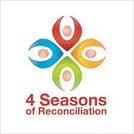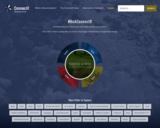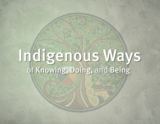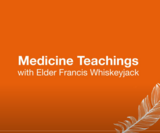
This 2.5-3 hour course is intended for teacher professional development.
- Subject:
- Indigenous Perspectives
- Material Type:
- Teaching/Learning Strategy
- Author:
- Arlene Low
- Date Added:
- 09/30/2021

A collection of resources to teach and learn about Truth and Reconciliation.

This 2.5-3 hour course is intended for teacher professional development.

ConnectR is an online tool created to inspire Reconciliation in Canada.
ConnectR helps you choose your next steps towards reconciliation.
Find calls to action to grow what you know, encourage a shared future and generate change.

The Braves Wear Braids (BWB) documentary looks at the spiritual meaning of braids, and the struggles faced by Indigenous youth to keep this important piece of the culture alive through interviews with Ethan Bear, elders, and other Indigenous men who speak to their own personal experiences with their braids.
Viewer Warning : This video contains content about racism and Residential Schools.

In 2008, a group called the Truth and Reconciliation Commission (TRC) was made. Their job was to listen
to stories about residential schools and then write the stories down so we can learn from our mistakes.
In 2015, the Truth and Reconciliation Commission announced their 94 Calls to Action. These are 94
activities all governments, courts, businesses, schools, and people living in Canada can do to help fix the
mistakes of the past and present so that all children – including First Nations, Métis, and Inuit children –
can grow up happy, healthy, safe, and proud of who they are.
This booklet is written by Spirit Bear as a youth-guide to the TRC’s 94 Calls to Action. Each of the calls is outlined in student-friendly language that will give them a deeper understanding of Truth and Reconciliation process.

This timeline presents key events and developments in Indigenous history in what is now Canada, from Time Immemorial to present. While no timeline can be exhaustive in its coverage, it provides a broad chronological overview to support educators and students.

From October 17th to 22nd, we observe Secret Path Week, an annual event dedicated to honoring the legacies of Gord Downie and Chanie Wenjack. These dates mark the anniversaries of Gord Downie’s and Chanie Wenjack’s entering the spirit world. Chanie, only 12 years old, fled from Cecilia Jeffrey Residential School in Kenora, Ontario, and walked along the train tracks for 36 hours before succumbing to exposure on October 22. Although Chanie is no longer with us, his story lives on through Gord Downie’s album Secret Path.
Join us virtually to learn directly from Indigenous artists, scientists, musicians, writers and more!
Watch Live or Watch Later
Camera Spot
Call In
Write In

Four mini-lessons have been created to address this topic. Highlighting Indigenous-made films from the NFB collection, the lessons will help students understand the spirit and intent of the treaties and provide them with the information they need to discuss the issues of access to drinking water, health care and education. In a spirit of reconciliation and co-operation, students are encouraged to write, record and share their Land Acknowledgement statements on social media

This video resource, created for teachers and students in Saskatchewan, offers insights from four cultural groups: Anishinabee, Cree, Métis, and Dene. It includes personal stories that emphasize the significance of the seasons and how they influence community life and traditional practices. You’ll discover reflections on the essential roles of elders and knowledge keepers, as well as the importance of kinship, family, and community connections. The resource also addresses Treaty education, storytelling, traditional foods, ceremonies, land-based learning, along with personal narratives about residential schools. By sharing these stories and perspectives, we enhance our understanding and knowledge as we progress on the journey of truth and reconciliation.

"This action toolkit contains a variety of resources:
*Short sample introductions to use during announcement time, at a display table or in one-on-one conversations
*A two-hour workshop to introduce your community to the campaign
*Winds of Change Series (If you have a full day or 3 sessions)"
*** All products including free downloads must be added to the shopping cart by clicking on the ‘Add to cart’ button.

Elder Wilson Bearhead answers questions from students - supporting videos, and a discussion guide are included.
Also - tools for talking circles, and lessons.

Orange Shirt Day and what is now called 'The National Day for Truth and Reconciliation is coming up on September 30. Here is a free resource for educators and parents of children learning and participating in Orange Shirt Day. A coloring page can be a simple tool to engage children and gives them an additional way to show their support as they learn about why orange shirt day is so important.
Coloring has been proven to have the ability to help relieve stress, generate mindfulness, engage active listening and help with the processing of emotions. And don't forget, coloring isn't just for kids!

Indigenous art colouring page in honour of National Day of Truth and Reconciliation/Orange Shirt Day
Child, Heart, Florals

Urban Iskwew - artwork by Hawlii Pichette

This webinar and list of resources for First Nations Metis 60s Scoop Experience in Canada was provided by FAST Educational Programs. If you wish to contact Lisa you can find her (lraber@fastcyv.ca) to ask questions, or share the work you have done with your students to make them advocates against hate.

The Indian Residential Schools and Reconciliation Teacher Resource Guides for grades 5, 10 and 11/12 were developed by the First Nations Education Steering Committee and the First Nations Schools Association. They are our response to the call by the Truth and Reconciliation Commission of Canada for education bodies to develop age-appropriate educational materials about Indian Residential Schools.
It is our hope that these resources will help students of all cultural backgrounds gain an understanding of the history of the relationship between Aboriginal and non-Aboriginal people over Canada’s history, with a focus on the BC experience. The materials are also designed to engage young people to take part in the journey of reconciliation.
A video on the home page does a great job of describing the who, what, and why of the resources.
British Columbia resource.

Elder Francis Whiskyjack smudges and talks about his experience as a residential school survivor, his healing, spirituality, and cultural identity.

"Human rights stories are all around us. We explore contemporary and historic human rights stories, from Canada and around the world."
This resource from The Canadian Museum for Human Rights explores numerous stories about Indigenous Perspectives (treaty education, witness blanket, UN Rights of Indigenous, Mincome, reconciliation, veterans, etc. ), Social Justice (BLM, misogyny, racism, genocide, antisemitism, Holodomor, refugees, etc.)
Each story contains information, artifacts, images, and questions to guide your thinking. It also links to related stories for further exploration.

Youth who participate in the art and essay stream can submit an art piece, essay, or other representation to express their vision of a reconciled Canada and what they hope others will learn from their submission.
Youth who participate in the project stream are asked to go one step further and submit a plan on how their project will address Reconciliation in their community or school.
Youth from select projects in both streams will be invited to participate in virtual leadership training exercises.
At the end of the school year, a national celebration will be held to honour up to twelve projects from the art and essay stream and up to fifteen projects from the project stream.

The Children’s Health and Well-being Measure (ACHWM) is a tool that gives Indigenous communities and organizations an overview of the health and well-being of children and youth in their communities.
The measure offers insight into children's Spiritual, Emotional, Physical, and Mental wellness.
The survey is completed on a tablet that engages children and acts as a catalyst for honest conversation. The results are shared with each child or youth in a visual form on the Balance Chart.

This document helps support students and teachers wishing to engage with Indigenous perspectives in science. It also covers why it is important to connect to local Indigenous communities, provides suggestions on how to develop student understanding, and shares examples of how student science research can directly connect to the
Canadian Truth and Reconciliation Calls to Action.
Also check out the Indigenous Engagement Starting Points Checklist which provides a list of Indigenous groups and/or individuals you/your students can reach out to, to start this connection. A question checklist is also provided to help support those starting discussions.